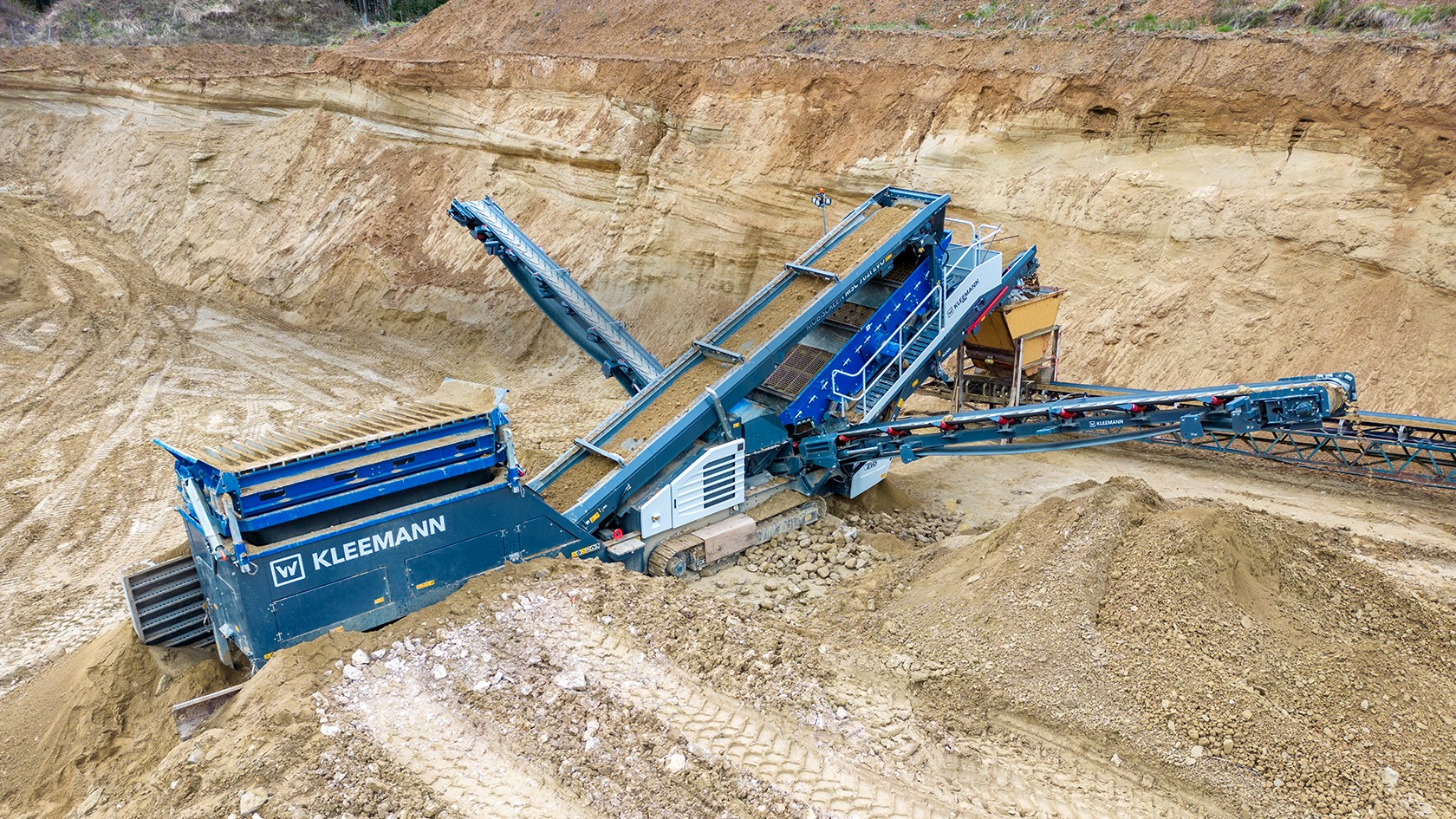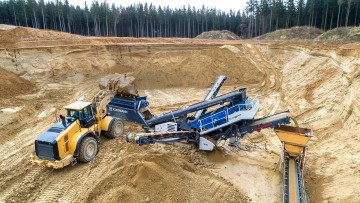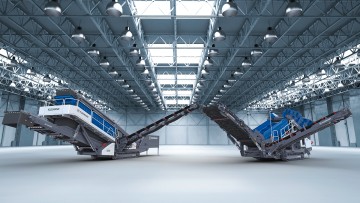This means that you will increasingly place your trust in electric drives in the future, also for other plants and machines?
Haßdenteufel: More and more plants, vehicles and machines on the market are using an electric drive. The choice between the acquisition of an electric drive or combustion engine in future will be easy to make. In the medium-to-long term we want to obtain our power from a photovoltaic system at our site here. This will then be the ideal combination economically – electric drives plus self-generated electricity. Here, the pilot system of a forest PV system is currently being set up for research purposes beside the quartz sand plant. We are working on this together with the Forest Research Institute Baden-Württemberg and the Forestry Department of the District Office in Sigmaringen. Our Managing Director, Hans Steidle, came up with the idea of the pilot system. We then went to the District Office where the initiative was welcomed and supported. Once we achieve positive results with the forest PV system, we want to set up several of them so that we can generate the required power ourselves. After all, we have enough space on our site.
For the new Kleemann screening plant MOBISCREEN MSC 702i EVO with Dual Power, however, you still have to rely on purchased electricity. What infrastructure does this require?
Haßdenteufel: The power supply required the development of a comprehensive concept, which we planned and implemented together with an external service provider. If we had fed the power supply via a 400 volts feed directly into the machine, then the long cable section would have required a cable cross-section that is far too large. This would have been too unmanageable and difficult to handle; on the other hand, a cable with such a cross-section is far too expensive. This is why we now work with two transformers. In the first transformer, the power is transformed from 400 to 990 volts. This permits a thinner cross-section, whereby the cable becomes more manageable and slightly more cost-effective.







